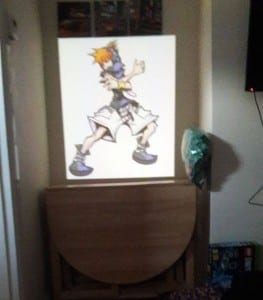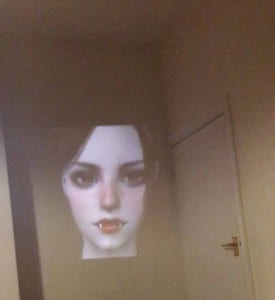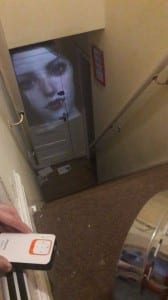To practice ahead of my ghost tour, I used the Phillips PicoPix to experiment with projecting pictures. By practicing in different settings, I can determine what works, and what doesn’t, ahead of the final piece.
The PicoPix allows for images to be stored directly onto the projector. This means it does not have to be connected to a device in order to display an image, making it easier to hide the device, as opposed to a big projector, as it does not need to be connected to a computer.
The first thing I experimented with was backgrounds, to see what wouldn’t show up when projected. The colours I experimented with were black and white. The black blended into the background, where as the white stood out too much. However, pictures with no background looked the best when projected.
The next element I experimented with was lighting. Obviously, the darker the room, the brighter the projected image would be. The darkness also adds to the atmosphere of the haunted setting. However, the images can still be seen when the lights are on. These are harder to see and look more faded, which could work well with the spectral aesthetic. This use of lighting can be used to create a contrast between the different ghosts in the event. It can also be used to ‘hide’ a ghost, and then bring it into the fore-focus by dimming the lights, and making the projected image stand out more. The distance of the projector from the surface the image is being displayed on also has an effect on the brightness. The closer to the surface, the brighter the image. However, this makes the image smaller. Distance will be a key part to consider, in order to get the correct balance of brightness to image size.
Positioning was the next element I experimented with. A key part of creating the illusion is hiding the projector. In order to do this, I tried shining the projector onto a mirror, and then using the reflection as the final projected image. I was able to reflect the image onto the intended surface, giving me more options when looking to hide the projectors in the exhibition. By angling the mirror, I am able to direct the image further from the projector location. This could allow for the projector to be hidden in a location the audience would not expect, making the appearance of the image more of a surprise and make the source easier to disguise. However, this could have negative effects on brightness due to the increased distance. If the source is hidden too well, then the audience could walk in front of it, breaking the illusion.




